Gen Z makes up 30% of the world’s population with a purchasing power of $450 billion in the world. Born between 1990 and the early 2010s, Gen Z spends more on fashion than any other form of entertainment.
This generation has more style influences and references than any other generation in history, creating an eclectic mix of fashion choices. Gen Z fashion trends combines old and new, with a strong focus on personal identity and authenticity.
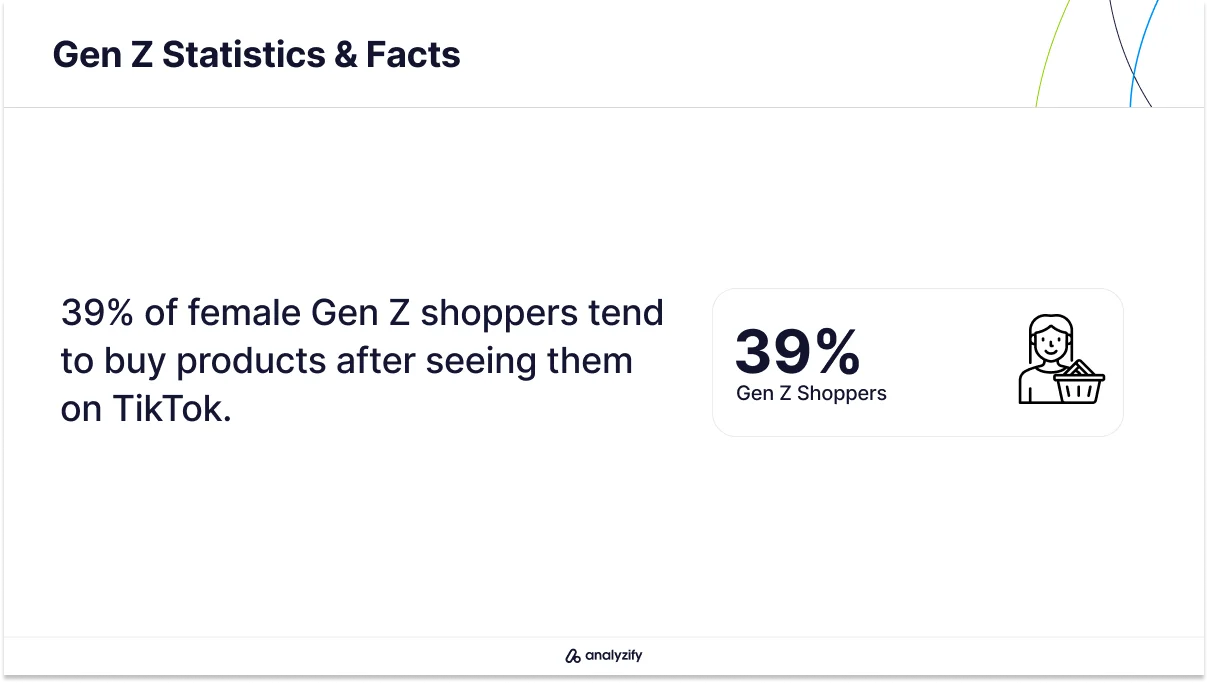
Key Takeaways:
- 57% of Gen Z discovers new brands through YouTube, while 39% of female Gen Z consumers make purchases based on TikTok content
- 46% of Gen Z won’t buy products without access to independent reviews and information
- 70% of Gen Z chooses to buy from companies they consider ethical
- 66% of Gen Z bases purchasing decisions on a brand’s sustainability efforts
- Over 50% of Gen Z spends at least 4 hours daily on social media, heavily influencing their fashion choices
- 71% of Gen Z actively seeks to discover new brands rather than sticking to established ones
Want to see all the key stats on Gen Z? Check out our Gen Z statistics page now!
Dominant Gen Z Fashion Trends for 2025
Here are the Gen Z fashion trends to watch in 2025:
Sustainable and Vintage Fashion
Gen Z strongly favors sustainable fashion choices, with 66% willing to pay more for environmentally friendly products. The average Gen Z closet contains about 15% thrifted and reworked pieces.
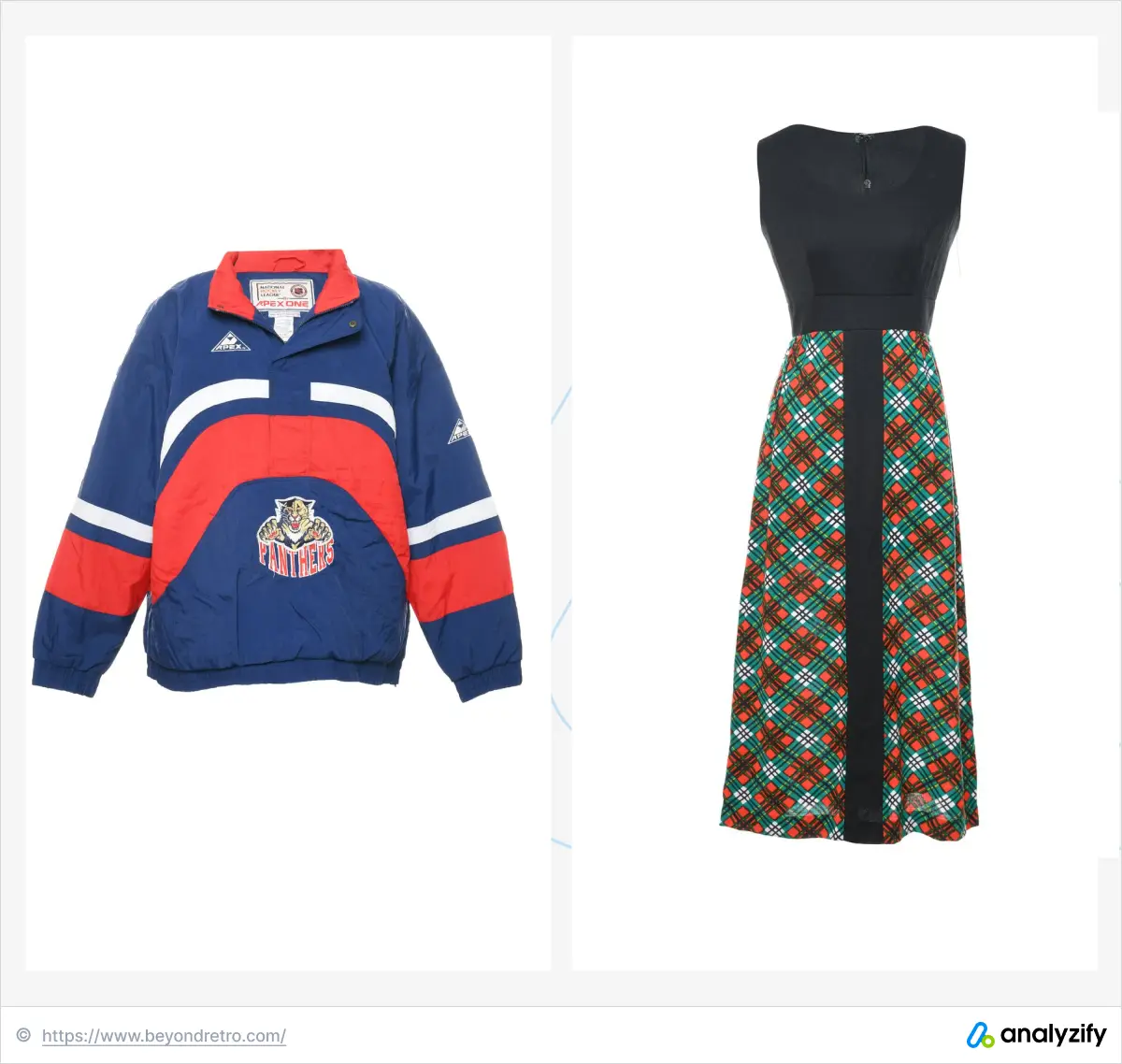 Over 60% of Gen Z shoppers look for secondhand options before buying new items, and the global secondhand market is expected to reach $350 billion by 2027. The most notable sustainable trends include:
Over 60% of Gen Z shoppers look for secondhand options before buying new items, and the global secondhand market is expected to reach $350 billion by 2027. The most notable sustainable trends include:
- Upcycled clothing modifications and DIY fashion
- Support for brands with verified environmental practices
- Vintage and thrift store shopping
Y2K
Y2K fashion has seen a 40% increase in global sales compared to 2024. The style merges early 2000s aesthetics with modern sensibilities, incorporating low-rise jeans, baby tees, and bedazzled accessories.
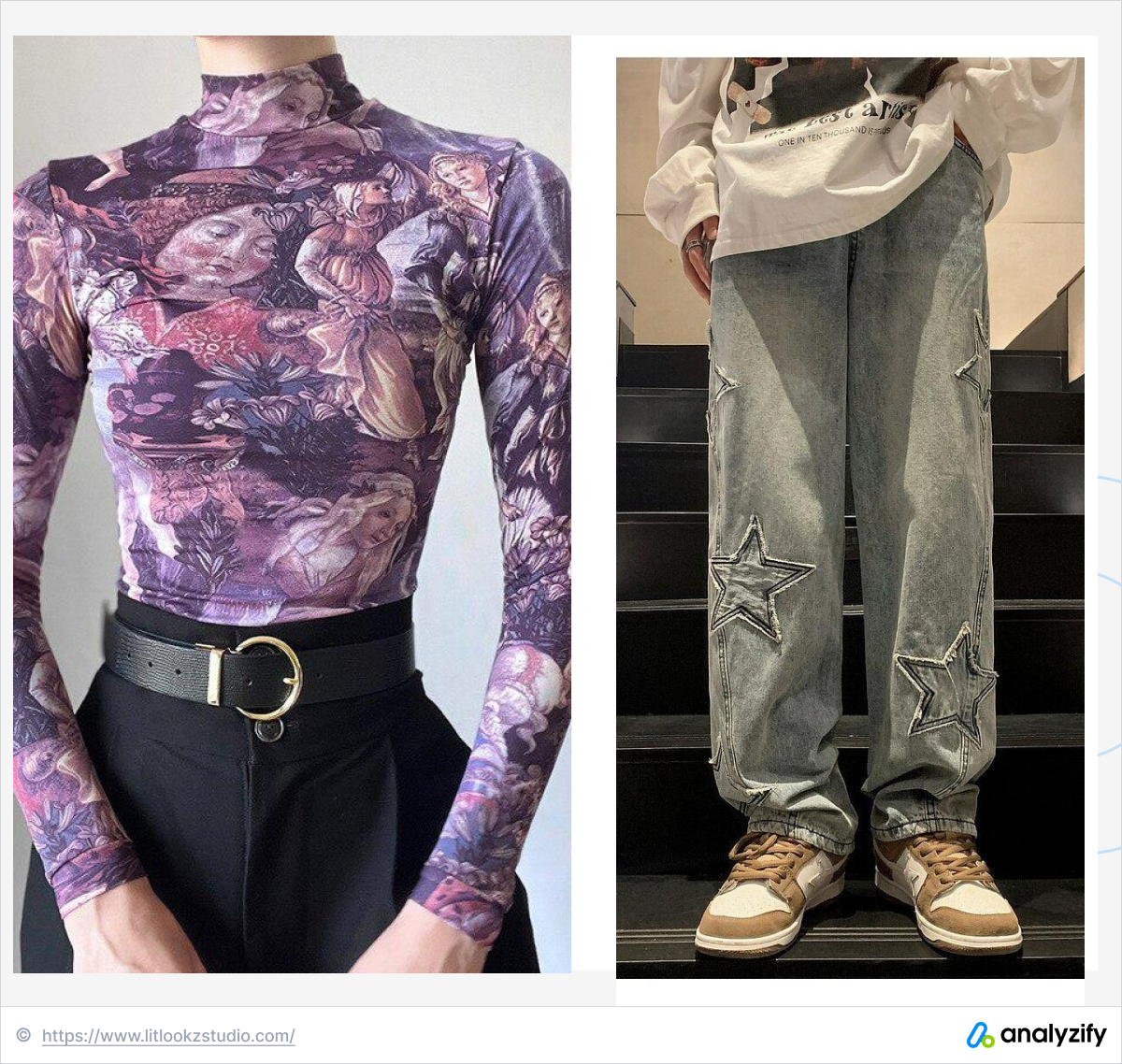 The 90s grunge revival is equally significant, with vintage athletic brands and jerseys showing a 32% growth in the resale market. Key Y2K elements making a comeback are:
The 90s grunge revival is equally significant, with vintage athletic brands and jerseys showing a 32% growth in the resale market. Key Y2K elements making a comeback are:
- Multiple belts and metallic accessories
- Platform sneakers and chunky shoes
- Tie-dye patterns and bright colors
Statement Maximalism
Maximalist fashion has replaced minimalism in 2025, with social media engagement on maximalist fashion hashtags increasing by 125%. Gen Z favors eye-catching prints, bold styles, and chunky accessories.
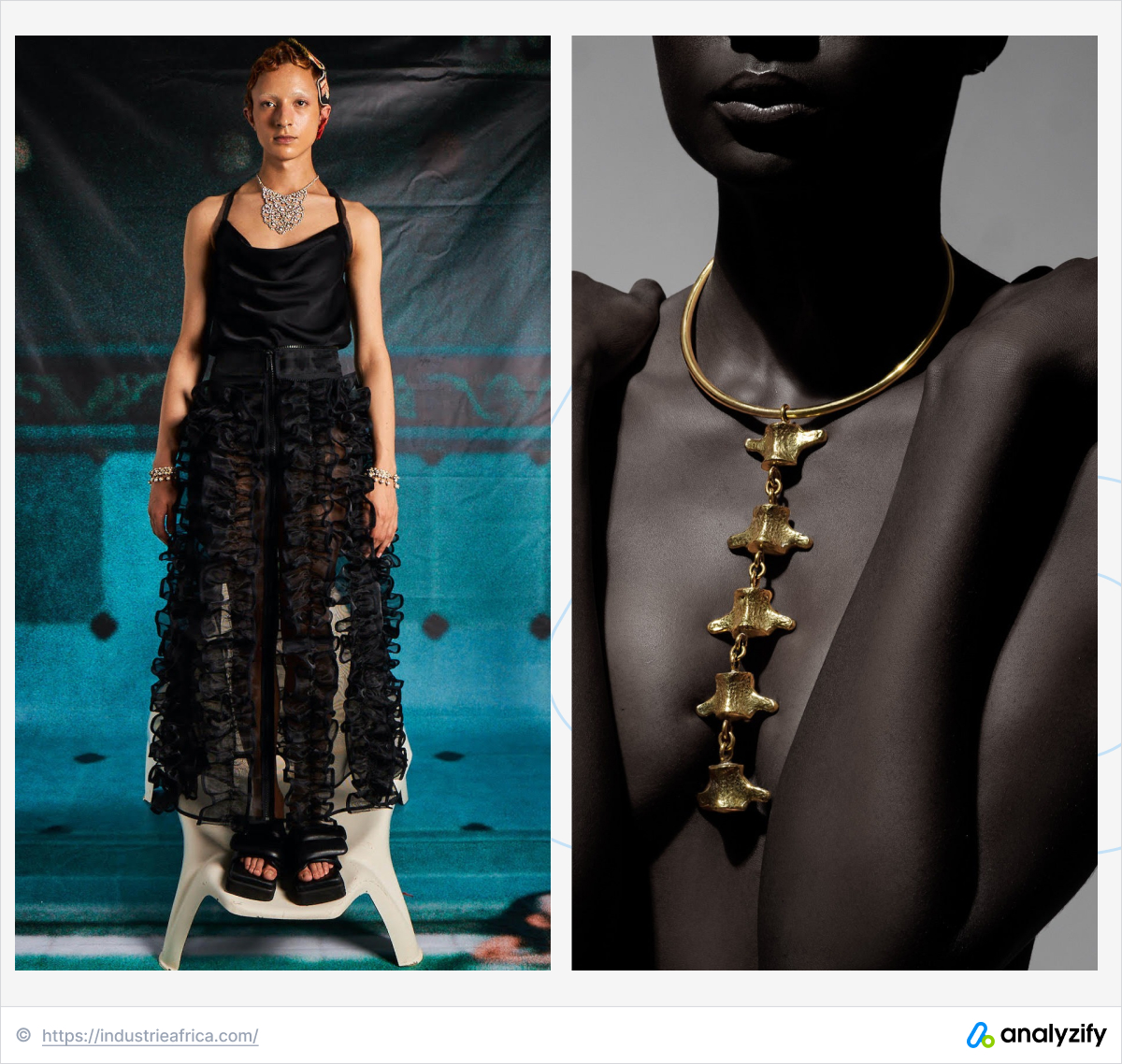 Sales of heavy, demanding jewelry designs have increased by 78% in early 2025.
Sales of heavy, demanding jewelry designs have increased by 78% in early 2025.
The trend emphasizes:
- Mixed patterns and unexpected color combinations
- Statement jewelry and bold accessories
- Layered, complex outfits
New Romantics Revival
The New Romantics trend combines glam rock with 19th-century fashion elements. This style takes inspiration from artists like Ziggy Stardust and Cyndi Lauper but with a more curated, modern approach.
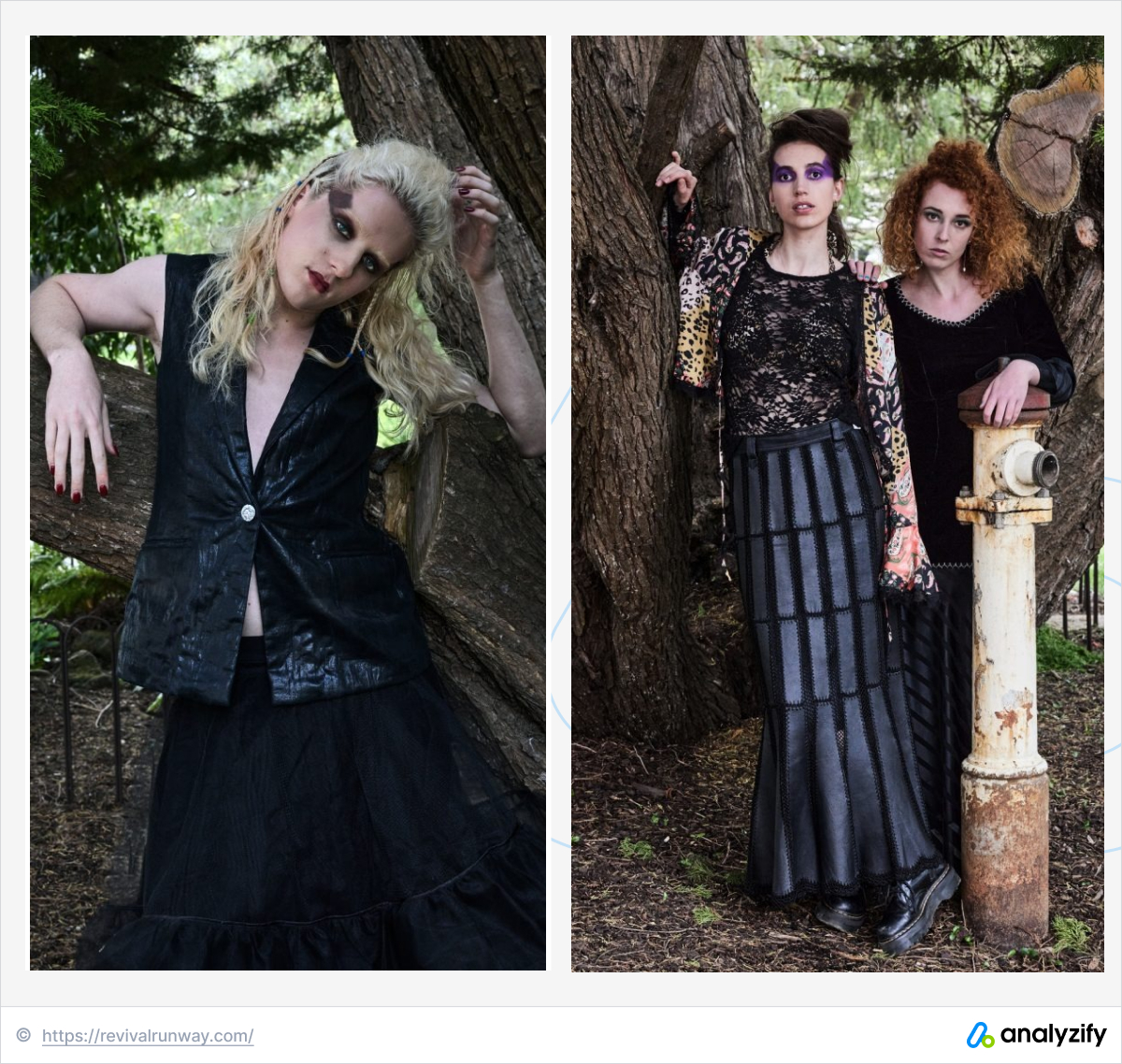 The look features puffy shirts, corset tops, and oversized blazers, often paired with costume jewelry and statement hats.
The look features puffy shirts, corset tops, and oversized blazers, often paired with costume jewelry and statement hats.
Wacky patterns and neon colors define this aesthetic, while celestial imagery and punk-pirate influences add unique touches.
The Goth Revival
Goth fashion has become a dominant subculture, influenced by shows like Wednesday and drawing inspiration from 80s and 90s goth bands. The style encompasses various interpretations, from traditional goth to romantic goth and cybergoth.
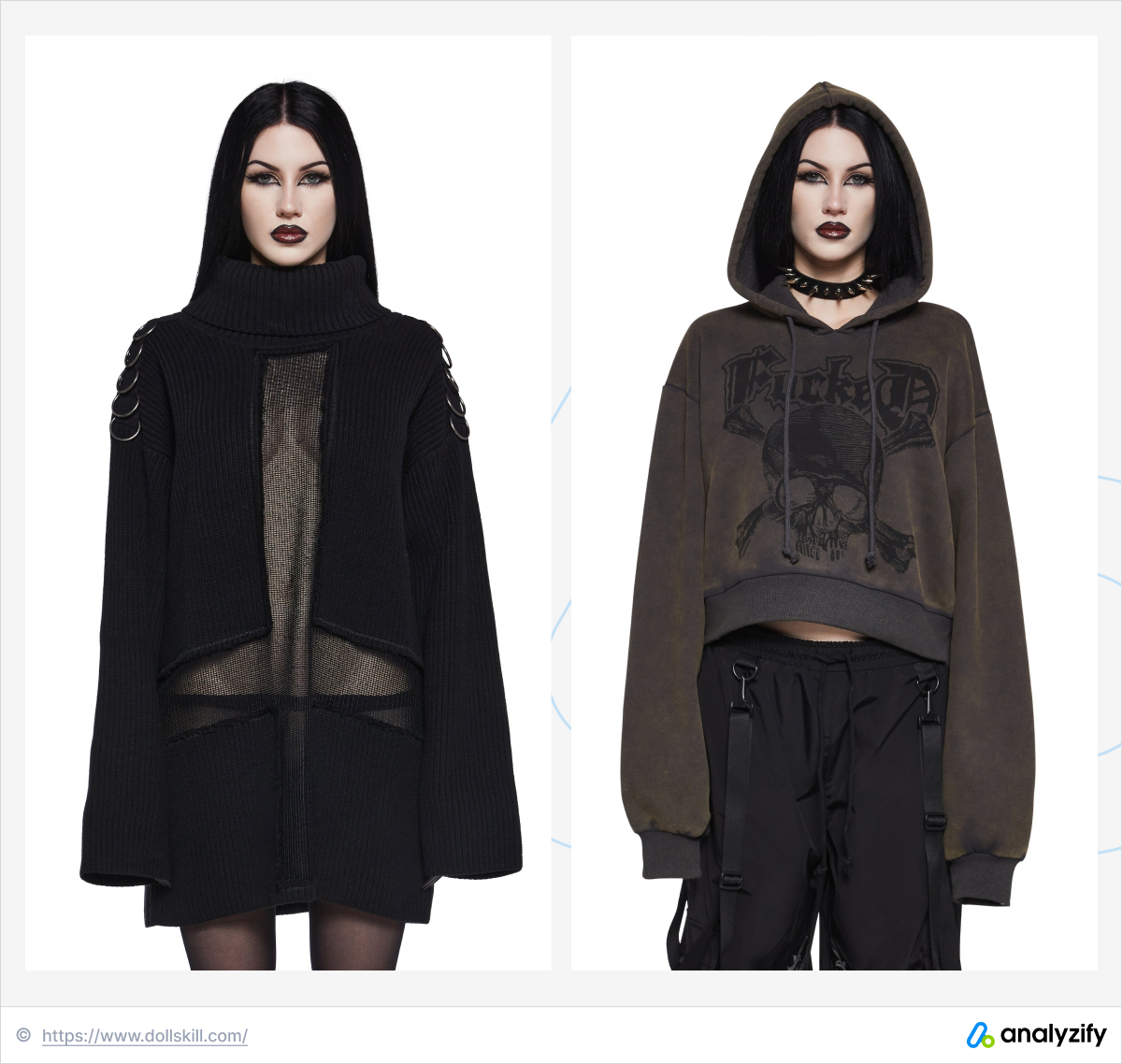 Essential elements include lace, fishnets, and platform boots, creating a dark, moody aesthetic.
Essential elements include lace, fishnets, and platform boots, creating a dark, moody aesthetic.
2025 goth fashion focuses on:
- Victorian-inspired pieces with contemporary updates
- Dark, dramatic silhouettes
- Mixed textures and layering
Streetwear and Athleisure
68% of Gen Z buyers prefer oversized clothing over regular-fitted garments. Streetwear trends combine elements from 90s hip-hop, sports, and rave culture. The style emphasizes comfort through oversized t-shirts, hoodies, and baggy pants.
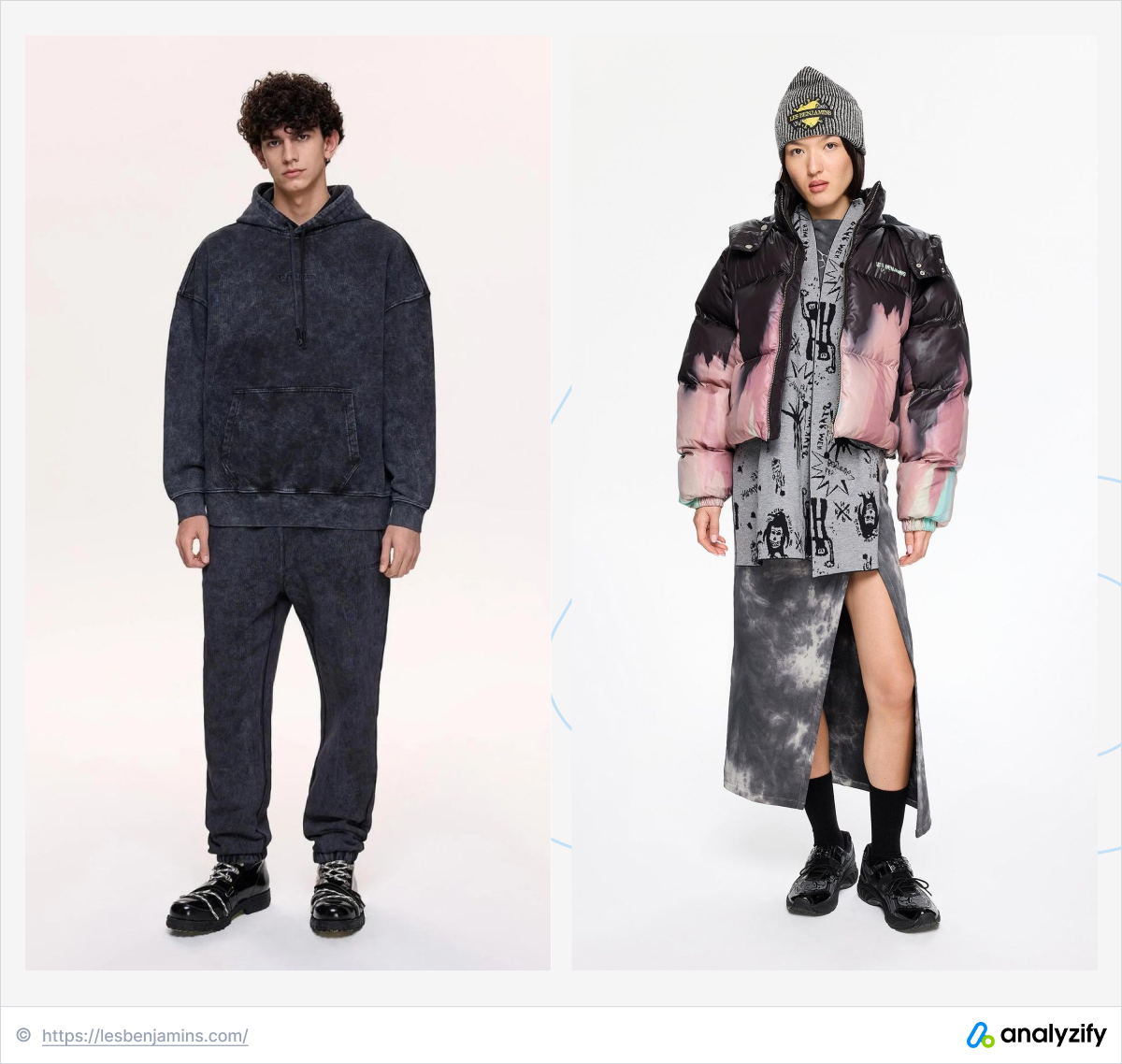 Popular elements include:
Popular elements include:
- Athletic-inspired pieces with street style twists
- Comfortable, oversized silhouettes
- Mix-and-match styling
Power Suits and Professional Wear
Professional wear has evolved significantly in 2025. Structured blazers now feature exaggerated shoulder pads, while bright colors have taken over from conventional neutrals.
Modern tailoring accommodates both feminine and masculine interpretations, and pinstripes appear in unexpected color combinations.
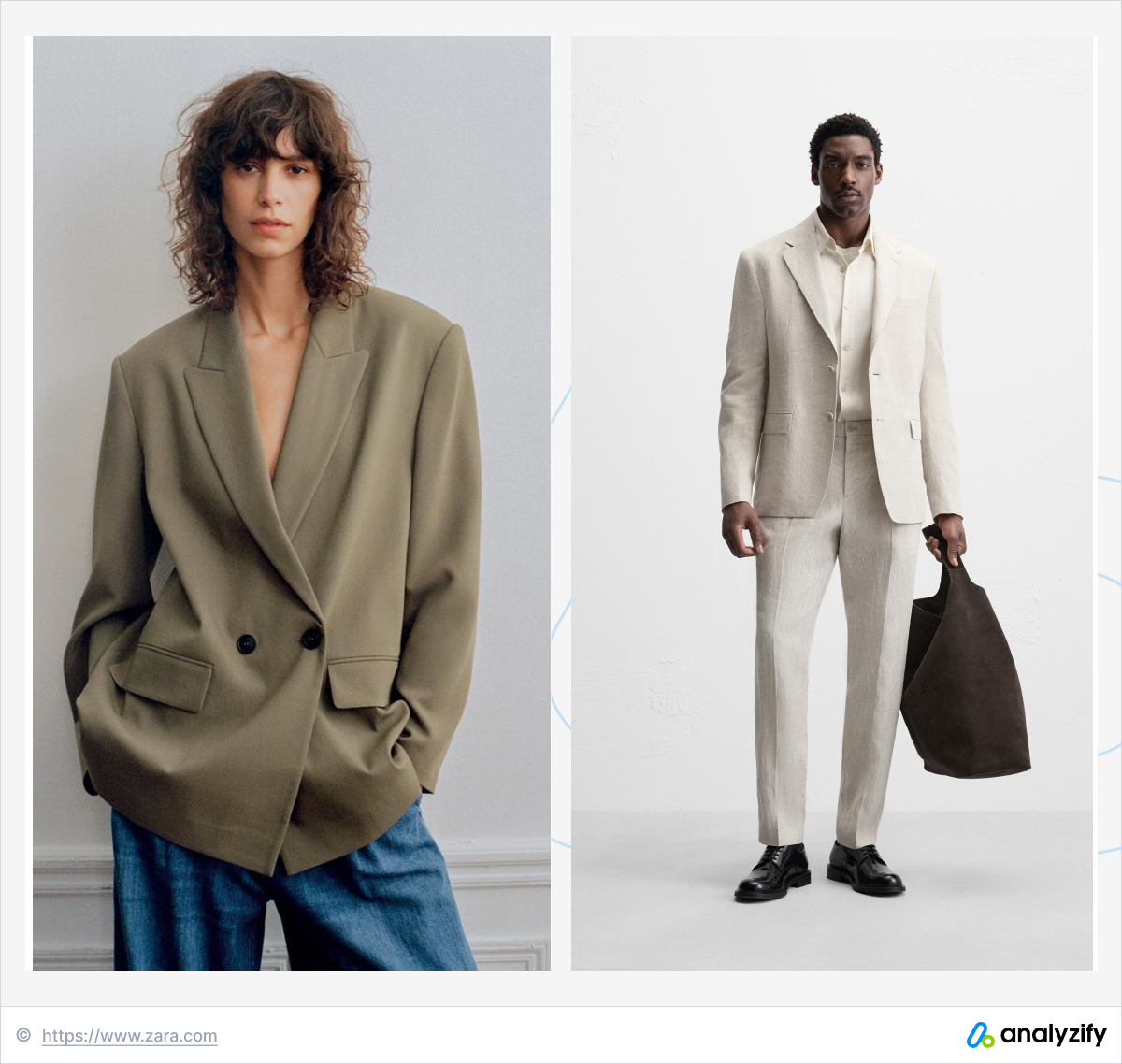 The look emphasizes:
The look emphasizes:
- Bold color choices in traditional silhouettes
- Gender-neutral styling options
- Statement hardware and details
Emerging Aesthetics for Gen Z
The Dark Academia style combines Gothic 19th-century fashion with modern refinement, featuring soft knits, wire glasses, and leather accessories.
Cottagecore represents a romantic take on farm life fashion, centered on loose-fitting dresses and vintage-inspired pieces.
The Frazzled English Woman trend draws from early 2000s British rom-coms, while the Old Money aesthetic focuses on subtle luxury through high-quality basics.
Technical and Futuristic Styles
The Y3K aesthetic has gained significant momentum in 2025. This forward-looking style incorporates metallic elements with utility-focused designs.
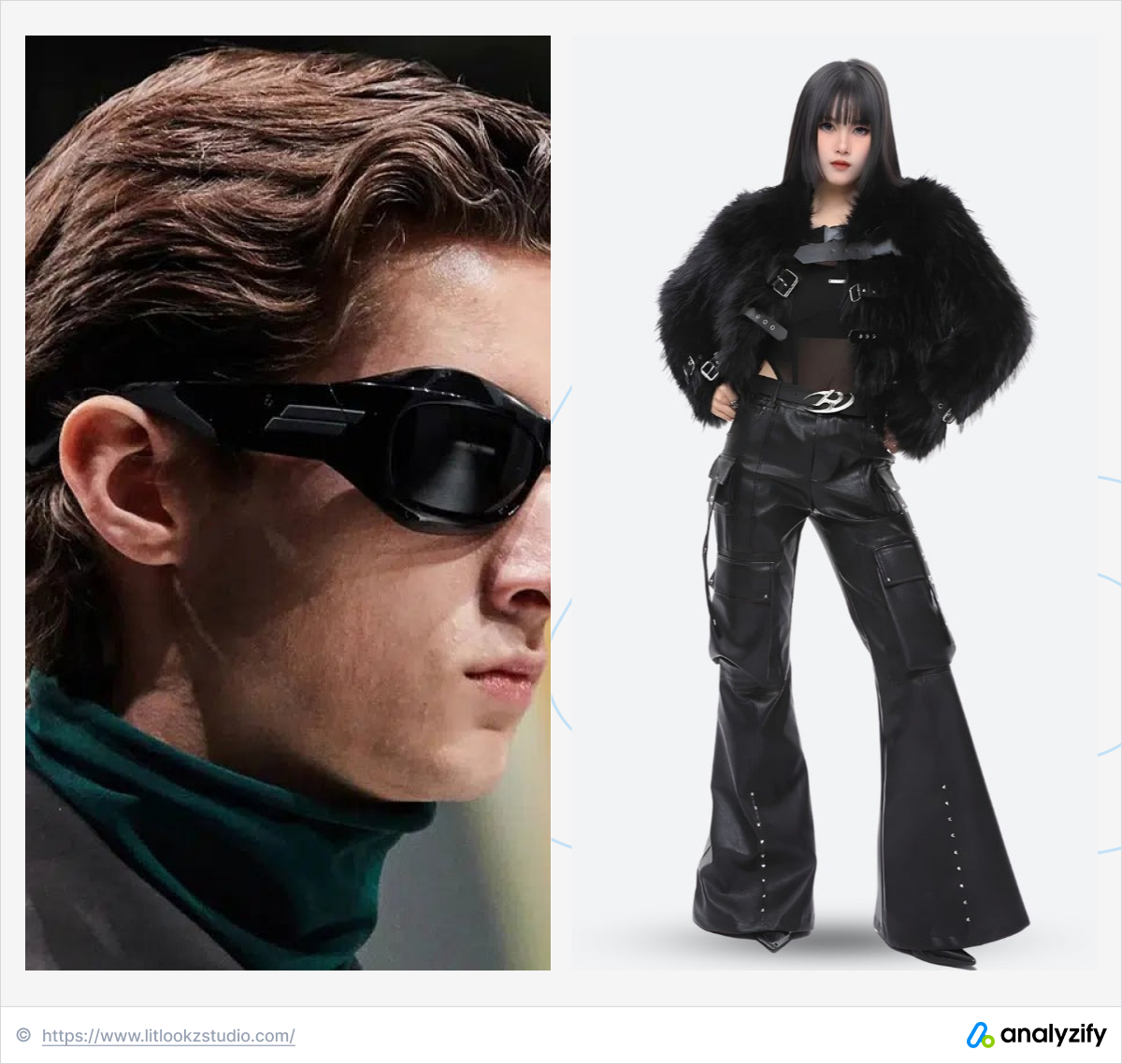 Key features include:
Key features include:
- Smart fabric integration and tech elements
- Metallic and reflective materials
- Utility-focused design details
Statement Accessories
Gen Z uses accessories to express individuality and enhance basic outfits. Platform shoes have become a footwear staple, while chunky jewelry and layered necklaces add personal flair.
Bright tights with unconventional patterns have emerged as a key trend. Dramatic headpieces and avant-garde bags complete these expressive looks.
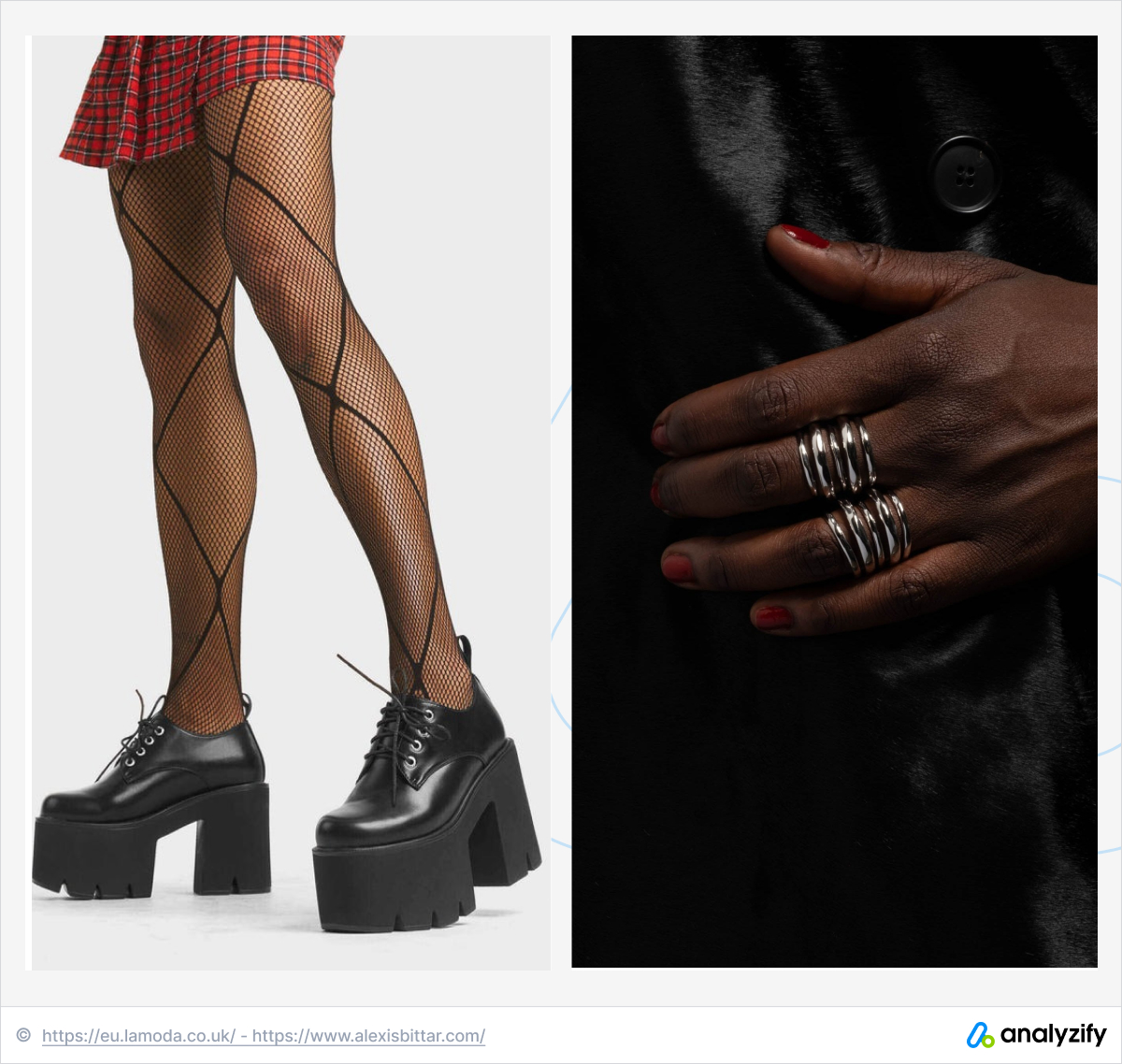 These trends reflect Gen Z’s values of self-expression, sustainability, and authenticity in fashion. Each style can be mixed and matched, showing Gen Z’s preference for creating unique, personal looks rather than following strict fashion rules.
These trends reflect Gen Z’s values of self-expression, sustainability, and authenticity in fashion. Each style can be mixed and matched, showing Gen Z’s preference for creating unique, personal looks rather than following strict fashion rules.
Gen Z Shopping Behavior in 2025
Gen Z’s fashion choices reflect their core values and beliefs, actively shaping their buying decisions and style preferences.
Sustainability Focus
Gen Z leads the shift towards sustainable fashion. Over 60% of Gen Z explores secondhand options before new purchases. Gen Z’s average closet contains 15% thrifted and reworked pieces, demonstrating their commitment to reducing fashion waste and moving away from fast fashion toward investment pieces.
Authenticity and Brand Relationships

Gen Z values genuine connections with brands, demanding transparency and honesty:
- 55% of Gen Z prefers brands showing behind-the-scenes content and tutorials
- 56% of Gen Z believes brands often misrepresent their products
- 45% of Gen Z engages more with transparent brands
- 71% of Gen Z actively seeks new brands to try
Financial Awareness
With nearly 33% of Gen Z reporting financial insecurity, they demonstrate careful spending habits:
- 50% of Gen Z compares prices across multiple platforms, including Amazon
- 46% of Gen Z requires access to independent reviews before purchasing
- Gen Z seeks brands offering flexible payment options while maintaining quality
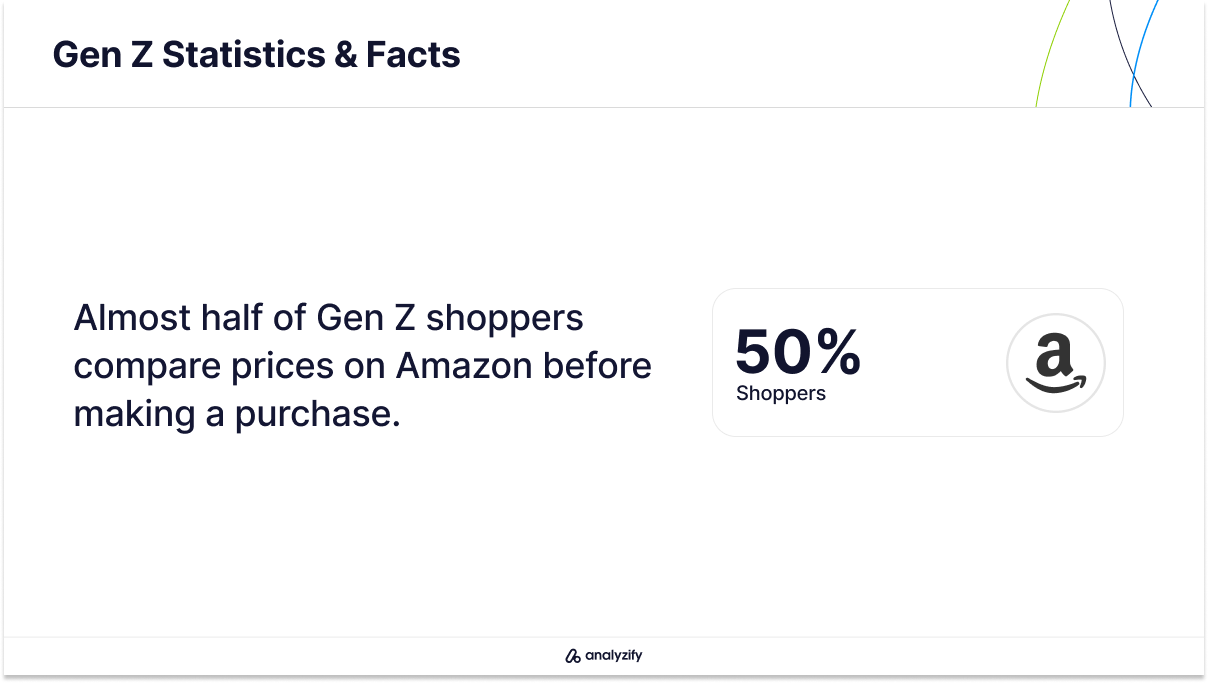 Diversity and Inclusivity
Diversity and Inclusivity
As the most diverse generation in terms of race and ethnicity, Gen Z’s values reflect in their fashion choices:
- 60% of Gen Z believes increasing racial and ethnic diversity benefits society
- 90% of Gen Z expects companies to actively address social issues
- Gen Z supports brands embracing inclusivity in products and marketing
Mental Health and Well-being
Mental health significantly influences Gen Z’s fashion choices:
- Over 60% of Gen Z prioritizes mental health and personal well-being
- Over half of Gen Z expects brands to support mental health initiatives
- 77% of Gen Z values work-life balance
- Gen Z prefers brands promoting realistic body standards and positive self-image
Social Media Shopping Behavior
Gen Z primarily discovers and purchases fashion through social platforms:
- 57% of Gen Z finds new brands through YouTube
- 39% of Gen Z female consumers buy products seen on TikTok
- 51% of Gen Z follows influencers for trend inspiration
- Only 21% of Gen Z discovers products through traditional TV advertising
Final Thoughts: The Future of Gen Z Fashion
Gen Z has fundamentally changed how fashion trends develop and spread. Their commitment to sustainability has transformed the fashion industry, making secondhand shopping and ethical production mainstream practices.
Key characteristics defining Gen Z fashion in 2025:
- Mixing vintage and modern styles to create unique aesthetics
- Using social media for style discovery and inspiration
- Prioritizing brand ethics and sustainable practices
This generation combines digital knowledge with authentic self-expression. They create trends by mixing different eras and styles to form new aesthetics. From Y2K revival to futuristic tech-wear, their fashion choices demonstrate a balance of nostalgia and innovation.
Social media shapes their fashion decisions differently than previous generations. Gen Z treats these platforms as discovery tools for personal style development. They research extensively, reading independent reviews and comparing prices before purchasing.
Major shifts Gen Z has brought to the fashion industry:
- Shifting from fast fashion to sustainable consumption
- Breaking traditional fashion rules and gender norms
- Requiring brand transparency
Gen Z’s fashion choices mirror their core values. Their selection of ethical brands and sustainable practices makes clear statements about their identity and beliefs.
As 2025 progresses, Gen Z’s influence on fashion continues to grow. Their approach is creating a future where fashion emphasizes consciousness, individuality, and freedom from conventional rules.
FAQ: Gen Z Fashion Trends 2025
Here are the most common questions about Gen Z fashion preferences and trends in 2025.
What percentage of Gen Z’s wardrobe is sustainable or secondhand?
The average Gen Z closet contains about 15% thrifted and reworked pieces.
Over 60% of Gen Z shoppers look for secondhand options before purchasing new items, and 66% are willing to pay more for sustainable products.
Which social media platforms influence Gen Z fashion choices most?
TikTok and YouTube lead Gen Z fashion discovery. 39% of female Gen Z consumers purchase products after viewing them on TikTok, and 57% discover new brands through YouTube.
Social media engagement with fashion content has increased by 125% since 2024.
What makes Gen Z different from previous generations in terms of fashion choices?
Gen Z values authenticity and personal expression over following trends. They mix different styles, eras, and aesthetics freely.
According to research, 71% actively seek new brands, and 56% believe traditional brands often misrepresent their products.
How important is brand ethics to Gen Z fashion consumers?
Very important - 70% of Gen Z prefers buying from companies they view as ethical. 90% think companies should address environmental and social issues, and 45% engage more with brands that show transparency and trustworthiness.
What are Gen Z’s shopping preferences for fashion items?
Gen Z combines online and offline shopping experiences. 50% use search engines to research products before buying, and nearly 50% compare prices on Amazon.
They value independent reviews, with 46% avoiding purchases if they cannot access third-party information about products.

































